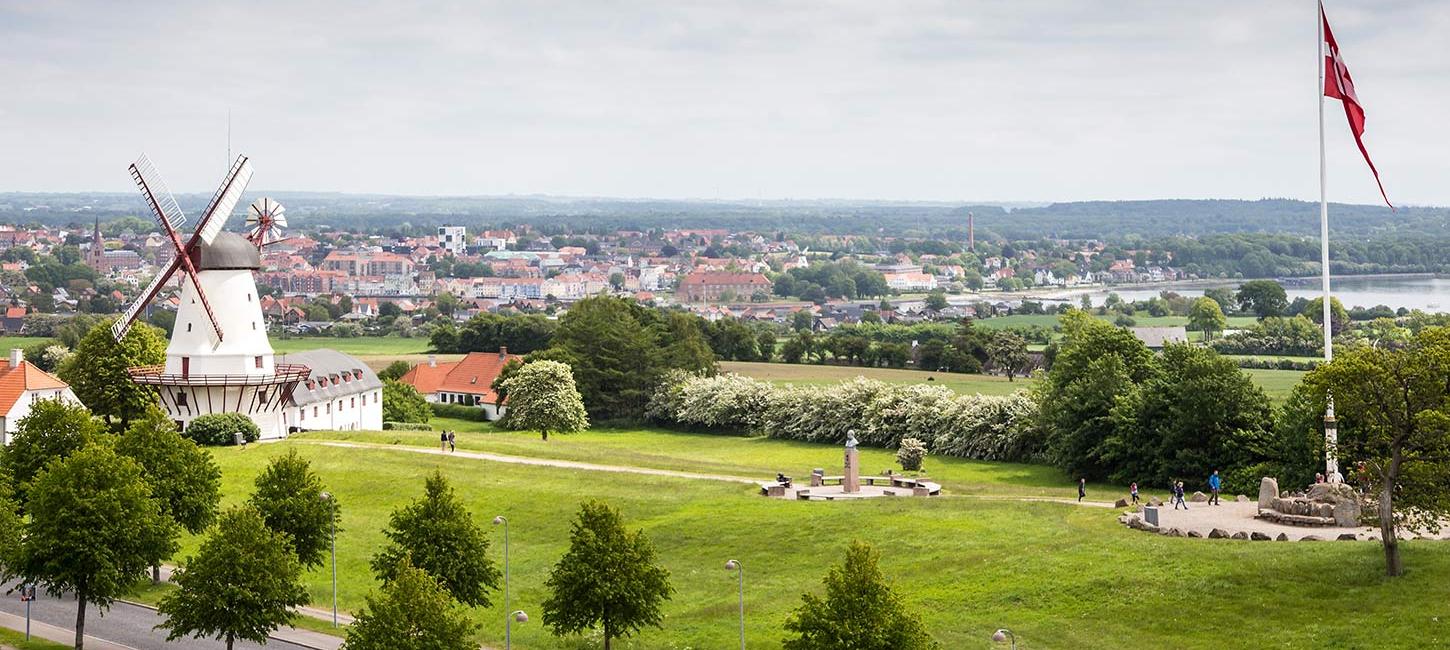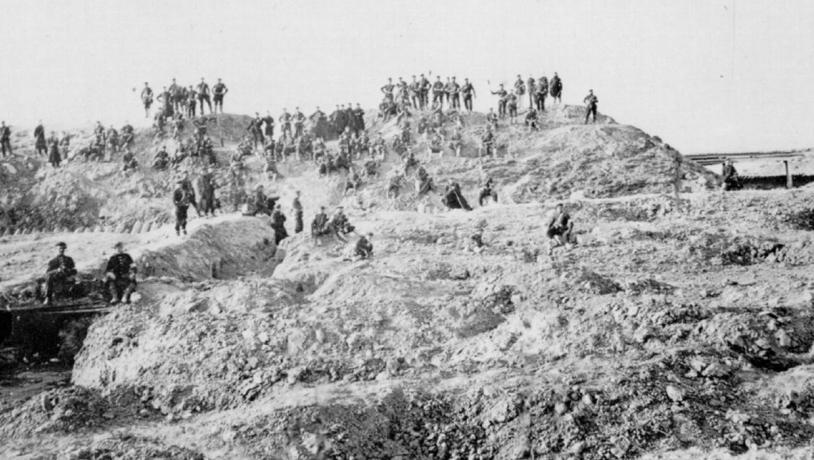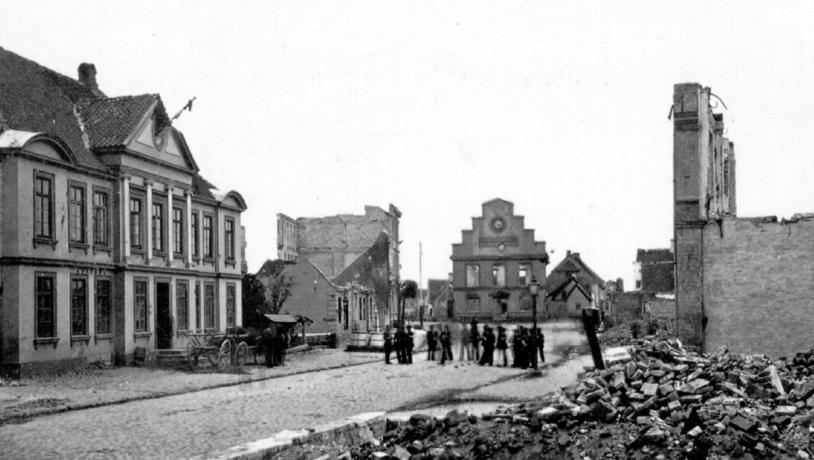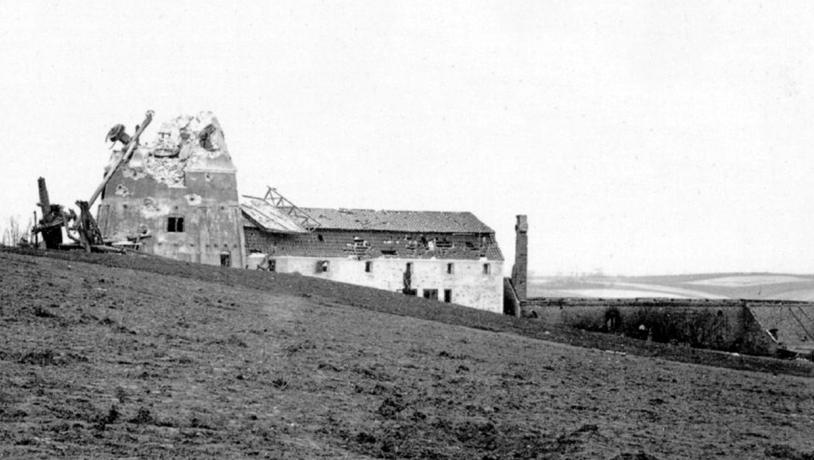Dybbøl Mill - the museum
National symbol of Danish bravery and museum over the millers through the ages and the history of the mill.

Dybbøl Mill is of great significance to the people living in the town of Sønderborg during the war in 1864 and is today the national symbol of Danish bravery.
The sight of the mill, up on the battlefield, fortifies the population, and to this day, the National symbol of Danish bravery still stands on Dybbøl Banke.
Bloody compatriots and bombarding is part of daily life in Sønderborg. Many of the formidable battles of the war in 1864 is happening on the towns door steps, the battlefield is laying upon Dybbøl Banke and in the middle of it all stands Dybbøl Mill. Overlooking the sound Als Sund, the citizens of Sønderborg can see Dybbøl Mill and this gives them the strength to endure the terror of the war.
Upon Dybbøl Banke, the Danish entrancements is situated between the battlefield and the sound, shielding the city – however, the German cannons is grooved.
Standing at Dybbøl Mill today overlooking green meadows and vigorous cornfields, only the remains of the entrancements reviles the bloody past. Luckily, for us a very special technic is discovered in the 19th century making it possible to retain time – photography!

Photography of entrancement no. 6 after the storm on Dybbøl Banke, 18 April 1864.©Det Kongelige BibliotekPhoto:Friedrich Brandt
The Prussian´s has placed cannons on Broagerland upon the cliffs Gammelmark Klinter, from here they can fire across the bay Vemmingbund and hit the Danish entrancements. The Prussian cannons is the latest on the market and the grooved bores gives them a longer reach this fact becomes a cruel reality for the citizens of Sønderborg on April 2nd and 3rd 1864.
Hear more on a guided city walk “A Town in Ruins – an 1864-town walk”, during summer time.
The luck does not keep up. The citizens of Sønderborg is still strong at hearth, as long as Dybbøl Mill stands it´s ground so will they! In her memoirs, "Erindringer fra Sønderborg og Als," Bertha Hahn expresses this sentiment.


Sunday April 10th 1864 a shell hits the mill and the whole mill top crushes down. Only 8 days later, the Prussian army sets in a storm and Dybbøl Banke is lost. However, the narrow sound and the pontoon bridge saves Sønderborg from the enemy - for the time being.
Denmark loses the war and the country border is moved up north to stream Kongeåen, extending across Jutland between the cities Ribe and Kolding. Dybbøl Mill, changes status from a symbol of Danish endurance to national symbol of Danish bravery.
Today Dybbøl Mill and the surrounding buildings is a museum, were you can learn more on the mill and it´s operation and Dybbøl as a memorial sight for the Danish and German descendent.